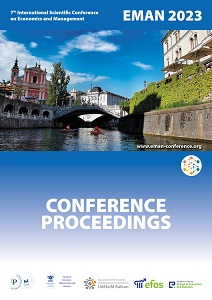Analysis of the Number of People Employed in Research and Development in the Countries of the European Union in the Period 2011 – 2020
Analysis of the Number of People Employed in Research and Development in the Countries of the European Union in the Period 2011 – 2020
Author(s): Ľubica Hurbánková
Subject(s): Social Sciences, Economy
Published by: Udruženje ekonomista i menadžera Balkana
Keywords: Number of people employed; Contribution method; Suslov´s structural similarity coefficient; Countries of the European Union
Summary/Abstract: The paper deals with the analysis of the number of people employed in research and development. The aim is to find out how R&D employment is doing in EU countries and what changes have occurred between 2011 and 2020. We will specifically analyze the number of scientific employees using the FTE (full-time equivalent) indicator. In recent years, the number of researchers in the European Union has increased – in 2011 there were 1.38 million (full-time equivalent), in 2020 their number grew to 1.89 million, which is an increase of 36.96%. In Greece and Hungary, the number of researchers almost doubled during the observation period. Using the contribution method, we found that the highest increase in researchers in 2020 compared to 2011 was in Poland, 94.28% and the lowest was in Finland, 4.26%. Germany had the largest share in the total number of researchers in 2011 (24.62%), which contributed with the highest share, 8.23%, to the total increase (37.59%). The value of Suslov´s structural similarity coefficient (0.0045) confirmed that the changes in the structure were minimal and the structure of the number of researchers in each EU country differed only slightly in 2011 and 2020.
Book: EMAN 2023 / 7 – Economics & Management: How to Cope with Disrupted Times - CONFERENCE PROCEEDINGS
- Page Range: 159-164
- Page Count: 6
- Publication Year: 2023
- Language: English
- Content File-PDF

